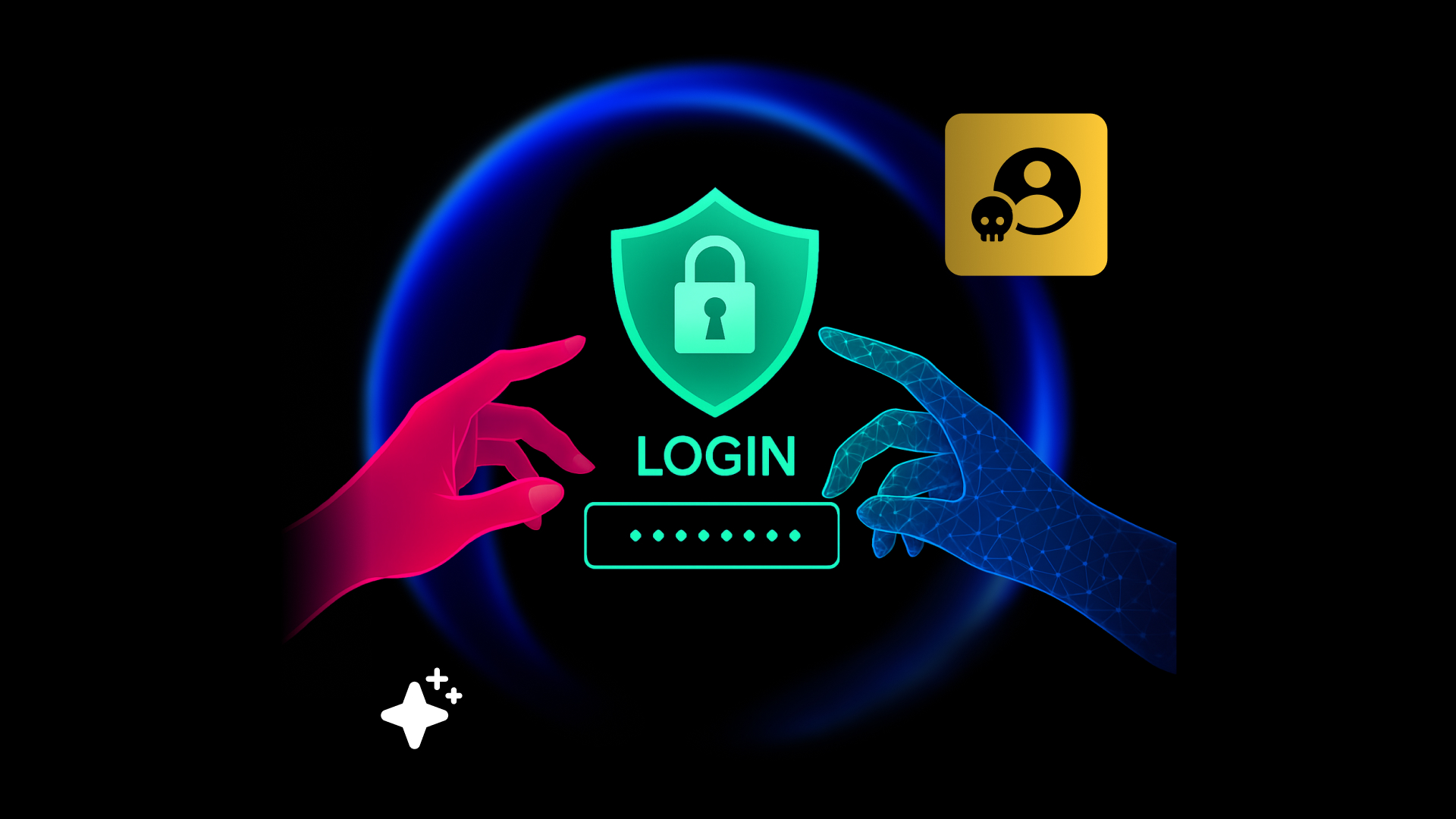Trust is the currency we trade for success in a digital economy. Building and maintaining digital trust isn’t just a competitive advantage; it’s a necessity, and the cornerstone of all our online interactions. Whether you’re making an online purchase, sharing personal information, or conducting business transactions, digital trust plays a pivotal role in shaping our decisions and actions. But what exactly is digital trust, and why is it so important?

What is digital trust?
As more of our everyday lives move online, from shopping to banking, engaging with companies that offer secure, trusted experiences is something every internet user deserves, and expects. For companies, this means establishing policies and practices that provide a safe environment for online interactions, which protect their users and establish trust and loyalty for both current and prospective customers.
Why is digital trust important?
Several factors are instrumental in establishing and maintaining digital trust. First and foremost is security, which involves safeguarding online data and transactions against unauthorized access and potential cyber threats. Privacy is equally critical to protect individuals’ rights to control their personal information and ensure that it’s used only with a person’s full consent.
Transparency is also a key component of digital trust, and online companies must create an environment that’s open and honest with customers about their data practices, policies, and the ways in which user information is being used. Likewise, reliability is also important to ensure that an organization is consistently delivering on its promises and providing a positive digital experience for users.
Lastly, and perhaps most importantly, is accountability—a truly integral part of digital trust. Accountability, like transparency, involves admitting to and taking responsibility for mistakes that compromise user information. To be accountable also means to take immediate action to mitigate a data breach or other exposure, communicate with users, and implement policies that prevent something similar from happening again.
How fraud destroys digital trust
Today’s digital fraud involves many different tactics and multiple attack vectors, many of which are increasingly sophisticated and often automated. The frequency of attacks like phishing emails, identity theft, financial scams, and phony websites in recent years all undermine trust in digital interactions. And the repercussions of fraud are profound, with individuals experiencing sometimes devastating financial losses and businesses facing reputational damage and revenue loss.
To counteract these threats and reinstate digital trust, the implementation of stringent security measures is imperative. These measures may include encryption, multi-factor authentication, and the adoption of advanced fraud prevention technologies—all aimed at safeguarding sensitive information and digital assets from malicious actors.
How do businesses build digital trust?
Just like digital fraud is multifaceted, fighting it must involve a multifaceted approach as well. This entails a commitment to transparent data practices, ensuring clear communication on how customer data is collected, utilized, and protected, with easily accessible privacy policies. Simultaneously, implementing robust fraud prevention measures, including firewalls and regular security audits, is essential for safeguarding customer information and digital assets from potential threats.
Prioritizing a customer-centric approach is also crucial in establishing and maintaining trust. Businesses should promptly address customer concerns, offer timely support, and cultivate a user-friendly and secure digital environment. Additionally, leveraging customer testimonials, reviews, and sharing certifications and industry affiliations can go a long way to building credibility among customers.
Furthermore, collaboration with trusted partners, whether reputable organizations, third-party auditors, or security experts, can enhance credibility and underscore a commitment to trustworthiness, ultimately solidifying digital trust.
The erosion of digital trust
Recent incidents have shed light on the erosion of digital trust across various sectors. Notably, a bank was found guilty of opening bogus accounts, utilizing genuine customer data to artificially boost employee sales contest results. In another sector, consumers attempting to cancel flights fell prey to scams through deceptive search engine results, resulting in significant financial losses. Furthermore, an Irish bank’s ATMs malfunctioned, distributing cash without verifying customers’ account balances, raising concerns about the reliability of financial systems.
Online dating has also witnessed an increase in scams, with individuals falling victim to fraudsters, leading to substantial monetary losses. The pervasive issue of phishing and scams has prompted banks to issue warnings regarding fraudulent text messages and calls impersonating their institutions. Data breaches continue to be a significant threat, exemplified by the recent MOVEit breach that exposed the records of 4 million health patients. Shockingly, the first half of 2023 in the U.S. alone witnessed 1,393 data breaches.
SEO poisoning has also become more prevalent, where legitimate websites are misrepresented in search engine results, redirecting unsuspecting users to download malware. Finally, social media platforms have become breeding grounds for scams, with the UK reporting that social media scams now outnumber traditional crimes in terms of victim count. These incidents collectively paint a deeply concerning picture of a digital landscape tainted by deception, fraud, and an alarming breach of trust.
Key components of digital trust
Digital trust can be divided into two components: trustworthiness and cybersecurity. Organizations must prioritize customer trust at all levels. Leaders need to set clear trust-building goals and foster a culture of digital trust within their company. It’s crucial that these goals cascade down to employees, emphasizing the significance of digital trust.
Measuring digital trust’s effectiveness is essential, and it’s important to focus on cost optimization, value preservation, customer loyalty, organizational resilience, and investor confidence. Protecting customer data, transactions, and investments is equally paramount.
To effectively mitigate the ever-evolving risks in today’s digital landscape, companies must proactively implement a comprehensive set of cybersecurity measures. One crucial strategy involves network segmentation, effectively isolating email servers from sensitive data to minimize the potential fallout in case of a breach. Vigilant supply chain management is equally vital, as it enables thorough assessment of the security practices employed by third-party vendors, ensuring they meet stringent security standards.
Furthermore, a multi-layered defense approach is essential, including robust mechanisms to combat common attack vectors such as phishing attempts, bot attacks, account takeovers, and the illicit use of stolen personally identifiable information (PII). Enhanced authentication methods, particularly for high-risk accounts, add an additional layer of security, making it significantly more challenging for malicious actors to gain unauthorized access.
To stay ahead of the curve, leveraging advanced anomaly detection powered by AI and machine learning is imperative. This technology allows for the swift identification of unusual patterns or behaviors that might signify a potential security threat. Additionally, proactively blocking bots and strategically using location data can effectively thwart unauthorized access attempts, strengthening the overall security posture of an organization. By embracing these multifaceted cybersecurity measures, businesses can proactively safeguard their digital assets and protect both their own and their customers’ sensitive information in an increasingly interconnected world.
Building and sustaining digital trust
To bolster digital trust, organizations can employ a multifaceted approach. They should invest in robust anomaly detection systems that not only safeguard transactions, but also instill confidence in customers by actively addressing potential threats. It’s important, too, to display recognized security seals prominently on websites to serve as a visual reassurance for users.
For high-risk activities, offering advanced, phishing-resistant multi-factor authentication methods is essential to further fortify security and enhance user confidence. Moreover, maintaining transparent and easily comprehensible privacy policies demonstrates a commitment to respecting users’ data and ensuring it’s handled with care and integrity.
Ultimately, building digital trust transcends being a mere checkbox; it should be an intrinsic part of a company’s DNA. By doing so, organizations can foster customer loyalty, drive innovation, and differentiate themselves in a competitive digital landscape. Trust is not just a currency; it’s the cornerstone of lasting success in the digital age.







